|
Sidon or Saida is the third-largest city in Lebanon. It lies between the city of Tyre and the Lebanese capital Beirut, which are both approximately 25 miles away. Currently, Sidon has a population of over 80,000, however, it has been inhabited since before records began. Although it is now a city, it began as a fishing town, which is what the name Sidon means in the Phoenician language. Sidon was also the name of Canaan and the grandson of Noah, therefore, it is likely the city was named after him.
When the Tribes of Israel were issued land at the end of the book of Genesis, Sidon was apportioned to the Tribe of Zebulun. “Zebulun will live by the seashore and become a haven for ships; his border will extend toward Sidon.” (Geneses 49:13) Being on the Mediterranean coastline, Sidon became a popular port and rapidly grew from a fishing village to a city in a commercial empire. The Phoenicians arrived in the city in around the time of Joshua (1355-1245 BC) and Sidon quickly became one of their most important cities, potentially the oldest. Craftsmen in the city were famed for producing glass and purple dies, and women were known for the art of embroidery. Evidence for the Sidonians’ skills can be read in the Bible, for example, “You know that we have no one so skilled in felling timber as the Sidonians.” (1 Kings 5:6) A group from Sidon spread out to colonise another city, Tyre, taking their trades with them, resulting in much competition between the two cities. In the Bible, Sidon is considered to be the “mother of Tyre” as emphasised in a prophecy against Tyre in Isaiah 23: “No more of your revelling, Virgin Daughter Sidon, now crushed!” (23:12) Sidon was such a powerful city it oppressed Israel along with “the Egyptians, the Amorites, the Ammonites, the Philistines … the Amalekites and the Maonites” (Judges 10:11-12), however, it was also conquered many times before Christianity came about. Sidon’s conquerors include Assyrians, Babylonians, Egyptians, Persians, Greeks and Romans. Evidence for each invasion has been found by archaeologists in the style of buildings, coins and materials from other places. There is also evidence that the Sidonians worshipped the god Ba’al. One of the ways Sidon infiltrated itself into Israel was through King Solomon who had many foreign wives. Sidon was one of the nations God had told the Israelites “You must not intermarry with them, because they will surely turn your hearts after their gods” (1 Kings 11:2), which is exactly what happened. Solomon’s wives led him astray, convincing him to worship their gods, including Ashtoreth, the goddess of the Sidonians. King Ahab of Israel was also guilty of being influenced by the Sidonians because he “married Jezebel daughter of Ethbaal king of the Sidonians, and began to serve Baal and worship him.” (1 Kings 16:31) Elijah, who prophesied during Ahab’s reign, travelled to Sidon at God’s instruction: “Go at once to Zarephath in the region of Sidon and stay there. I have directed a widow there to supply you with food.” (1 Kings 17:9) While he was there, he performed miracles, including bringing the widow’s son back to life. Other prophets in the Bible frequently wrote about Sidon, for example, Isaiah, who referred to the city concerning the prophecy against Tyre. Jeremiah mentioned Sidon a least three times, the final during a message about the Philistines: “For the day has come to destroy all the Philistines and to remove all survivors who could help Tyre and Sidon.” (Jeremiah 47:4) Ezekiel also mentioned Sidon during a lament over Tyre as well as a prophecy against Sidon: “‘I am against you, Sidon, and among you I will display my glory. You will know that I am the Lord, when I inflict punishment on you and within you am proved to be holy. I will send a plague upon you and make blood flow in your streets. The slain will fall within you, with the sword against you on every side. Then you will know that I am the Lord.” (Ezekiel 28:22-23) The prophet Joel also speaks of Sidon who is judged for their actions against God’s people. Zechariah prophesies a similar judgement. Despite these prophecies, Sidon continued to prosper as a great city, although under many different hands. At the end of the Persian era in 351 BC, the Egyptian pharaoh Artaxerxes III invaded Sidon, who was shortly followed by Alexander the Great in 333 BC. In the remains of the Necropolis of Sidon, the Alexander Sarcophagus was discovered, which is now on display at the Archaeological Museum of Istanbul. The tomb featured bas-relief carvings of the triumphs of Alexander the Great. Following Alexander the Great, the city continued to prosper and, even though it eventually fell under Roman dominion, Sidon continued to mint its own silver coins. The Roman’s built a theatre and many monuments in the city and it is believed Herod the Great, who was the king of Galilee when Jesus was born, visited Sidon. Herod was not the only Bible character from the New Testament to visit the city; “Jesus withdrew to the region of Tyre and Sidon” (Matthew 15:21) from Jerusalem. Whilst there, Jesus healed a demon-possessed girl whose mother had such faith in him. Jesus may also have found some of his followers in Sidon as Mark records, “Jesus withdrew with his disciples to the lake, and a large crowd from Galilee followed. When they heard about all he was doing, many people came to him from Judea, Jerusalem, Idumea, and the regions across the Jordan and around Tyre and Sidon.” (Mark 3:7-8) The final time Sidon is mentioned in the Bible is in the Acts of the Apostles. Paul, who had been arrested, was being taken to Rome, which was a very long journey. Along the way they “landed at Sidon; and Julius, in kindness to Paul, allowed him to go to his friends so they might provide for his needs.” (Acts 27:3) After Biblical times, Sidon became part of the Byzantine Empire during which time many of the surrounding cities were destroyed in an earthquake. Sidon, however, continued to thrive until the Arabs conquered it in 636 AD. From then on, Sidon was continuously conquered by foreign powers, particularly during the Crusades when it changed hands between Jerusalem, Norway, Egypt and Germany until the Saracens and Mongols destroyed it. Only the walls of the original city remain visible. Sidon was rebuilt as a fishing town and blossomed under the Ottoman Empire. After the First World War, Sidon became part of the French Mandate of Lebanon, which changed hands to the British during World War Two. Following the war, hundreds of Palestinian refugees arrived in Sidon, swelling the numbers of inhabitants to over 10,000. By 2000, however, the population had risen to 65,000. Today, the majority of Sidon’s population belong to the Sunni Muslim faith, however, there are a few thousand Christians in the city: Armenian Catholic (0.1%), Greek Melkite Catholic (3.7%), Lebanese Maronite Christians (3.3%), Greek Orthodox (0.7%), Armenian Orthodox (0.6%), Evangelicals (0.4%), Roman Latin Catholic (0.2%), Chaldean Catholic (>0%), Syriac Orthodox (>0%), Syriac Catholic (>0%), Assyrian Church of the East (>0%) and Copts (>0%). Just for fun, here is a list of the main attractions in Sidon, should you ever find yourself in the area: · Sidon Sea Castle, built by the Crusaders in the 13th century · Sidon Soap Museum · Caravanserai of the French, a 17th-century roadside inn · Debbane Palace, soon to be opened as the History Museum of Sidon · The Castle of Saint Louis, built by the Crusaders in the 13th century · Eshmun Temple, dedicated to the Phoenician god of healing
1 Comment
Nineveh was once the capital of the Neo-Assyrian Empire located in Upper Mesopotamia on the Eastern bank of the River Tigris. The land on which the city once stood now belongs to Mosul, a major city in Iraq. Until 612 BC, it was the largest city in the world, however, after civil war and invasions, Nineveh was reduced to rubble. In the Bible, Nineveh is first mentioned in Genesis 10, which says, “From that land he went to Assyria, where he built Nineveh, Rehoboth Ir, Calah and Resen, which is between Nineveh and Calah—which is the great city.” (10:11-12) In this verse, “he” is Nimrod, the son of Cush, the grandson of Ham, and the great-grandson of Noah. Older translations of the Bible mention Ashur instead, the second son of Shem, however, it is now generally agreed Nimrod was the founder of Nineveh. According to tradition, Nimrod was also the leader of those who built to Tower of Babel. Nineveh eventually became the capital of the Assyrian empire and the home of the king, Sennacherib (c.740-681 BC). “So Sennacherib king of Assyria broke camp and withdrew. He returned to Nineveh and stayed there.” (2 Kings 19:36 and Isaiah 37:37) The king of Judah at the time was King Hezekiah (c.739-c.687 BC), during whose reign the prophets Isaiah and Micah prophesied. During Sennacherib’s reign, he aroused fear in the neighbouring kingdoms, including Judah, however, Jerusalem was delivered from Sennacherib after his sons assassinated him. The prophet Nahum the Elkoshite predicted the destruction of Nineveh, a city with which God was angry. “From you, Nineveh, has one come forth who plots evil against the Lord and devises wicked plans.” (Nahum 1:11) Nahum revealed God’s commands concerning the city: “You will have no descendants to bear your name. I will destroy the images and idols that are in the temple of your gods. I will prepare your grave, for you are vile.” (Nahum 1:14) In the second book of Nahum, the prophet described the attackers, who would cause Nineveh’s fall, including details about their red uniforms and metal chariots. In Nahum 3, the prophet foretells the city’s sad fate. “Nineveh is in ruins—who will mourn for her?” (Nahum 3:7) Nineveh’s end was sudden and tragic, going from the biggest city in the world, to desolation. “He will stretch out his hand against the north and destroy Assyria, leaving Nineveh utterly desolate and dry as the desert.” (Zephaniah 2:13) God, however, allowed Nineveh the opportunity to repent. The familiar story, which lacks some credibility (but that’s another story), tells of Jonah son of Amittai who God commanded to “Go to the great city of Nineveh and preach against it, because its wickedness has come up before me.” (Jonah 1:2) As we know, Jonah was afraid and attempted to flee to Tarshish by boat. Whilst he was at sea, a huge storm arose, which threatened to destroy the ship. Knowing the storm was caused by God, Jonah insisted to be thrown overboard to end the storm, where a big fish swallowed him. Jonah is eventually saved and God commanded him a second time: “Go to the great city of Nineveh and proclaim to it the message I give you.” (Jonah 3:2) Jonah obeyed God the second time and travelled to Nineveh, which was “a very large city; it took three days to go through it.” (Jonah 3:3) Jonah proclaimed to the Ninevites, “Forty more days and Nineveh will be overthrown” (3:4) and they believed him, putting on sackcloth and showing their repentance by fasting. Even the king of Nineveh did the same. God, therefore, “saw what they did and how they turned from their evil ways, he relented and did not bring on them the destruction he had threatened.” (3:10) The fourth book of Jonah tells us there were more than 120,000 people in Nineveh, all of whom were wicked until Jonah’s visit. “The men of Nineveh will stand up at the judgment with this generation and condemn it; for they repented at the preaching of Jonah, and now something greater than Jonah is here.” (Matthew 12:41 and Luke 11:32) Jesus referred to the salvation of Nineveh during his preaching, explaining that the Son of God has been sent to earth to achieve what Jonah did on a much wider scale. Unfortunately, although the Ninevites had been saved, the physical city was still reduced to rubble in 612 BC. It is estimated the area was first inhabited as early as 6000 BC and by 3000 BC was an important religious centre for the Mesopotamian goddess Ishtar. It is not certain when Nineveh was established as a city, however, it was mentioned in texts relating to the reign of Shamshi-Adad I in about 1800 BC. Archaeological evidence reveals Nineveh was extensively built upon during the late 3rd and 2nd millenniums BC, however, it was not until the reign of Sennacherib that the city became truly magnificent. Sennacherib built a “palace without a rival” which was comprised of about 80 rooms. Some believe the palace contained the original Hanging Gardens of Babylon. Sennacherib’s son Esarhaddon (713-669 BC) continued to develop and found new palaces and temples, as did his successor, Ashurbanipal (d.627 or 631 BC). Unfortunately, Nineveh’s status as the greatest city in the world was short-lived after Ashurbanipal’s death. Several claimants to the throne provoked a civil war and countries under Assyria’s control began to rebel, including the Babylonians and Persians. By 612 BC, Nineveh had been sacked and razed to the ground. Excavations of the ancient city of Nineveh began in the 19th century and the young British diplomat Austen Henry Layard (1817-94) discovered the remains of the lost palace of Sennacherib in 1849. The majority of the surviving elements of the palace have been moved to museums around the world and all that remains of Nineveh is the remnants of the city walls and two mounts, one of which is known in English as “Prophet Jonah”. The city walls were once 12km in length and contained several gateways. Archaeologists have explored only five to any extent and a little information has been revealed about their purpose. Just for fun, here is a snippet of what they have discovered:
To learn more about the fall of Nineveh read the blog I Am Ashurbanipal
Whilst researching for Advent and Christmas services, I attempted to find all the prophecies in the Old Testament that place the traditional characters in the Nativity, including a few that do not get mentioned in the Gospels. Below is a list of all the Old Testament prophecies with the relevant verses from the New Testament. I have also included a rough date as to when the prophecies were written.
Bethlehem "But you, Bethlehem Ephrathah, though you are small among the clans of Judah, out of you will come for me one who will be ruler over Israel, whose origins are from of old, from ancient times." - Micah 5:2 (742-687 BC) "So Joseph also went up from the town of Nazareth in Galilee to Judea, to Bethlehem the town of David, because he belonged to the house and line of David. He went there to register with Mary, who was pledged to be married to him and was expecting a child. While they were there, the time came for the baby to be born, and she gave birth to her firstborn, a son. She wrapped him in cloths and placed him in a manger, because there was no guest room available for them." - Luke 2:4-7 Mary "Therefore the Lord himself will give you a sign: The virgin will conceive and give birth to a son, and will call him Immanuel." - Isaiah 7:14 (740-681 BC) "God sent the angel Gabriel to Nazareth, a town in Galilee, to a virgin pledged to be married to a man named Joseph, a descendant of David. The virgin’s name was Mary. The angel went to her and said, “Greetings, you who are highly favoured! The Lord is with you.” - Luke 1:26-28 Joseph "The sceptre will not depart from Judah, nor the ruler's staff from between his feet, until he to whom it belongs shall come and the obedience of the nations shall be his." - Genesis 49:10 (Moses 1445 BC) "A shoot will come up from the stump of Jesse; from his roots a Branch will bear fruit." - Isaiah 1:11 "The days are coming," declares the LORD, "when I will raise up for David a righteous Branch, a King who will reign wisely and do what is just and right in the land." - Jeremiah 23:5 (627-586 BC) “Joseph son of David, do not be afraid to take Mary home as your wife, because what is conceived in her is from the Holy Spirit. She will give birth to a son, and you are to give him the name Jesus, because he will save his people from their sins.” - Matthew 1:20-21 Joseph was a direct descendant of King David, whose father was Jesse, which is evidenced by the genealogy in the first chapter of the Gospel of Matthew. If Mary had not married Joseph and married someone else, then the whole thing would fall apart. She had to marry someone of David's line, therefore, the two of them coming together could not have been by chance. Donkey "The ox knows its master, the donkey its owner's manger, but Israel does not know, my people do not understand." - Isaiah 1:3 Shepherds “Then I Myself will gather the remnant of My flock out of all the countries where I have driven them and bring them back to their pasture, and they will be fruitful and multiply. “I will also raise up shepherds over them and they will tend them; and they will not be afraid any longer, nor be terrified, nor will any be missing,” declares the LORD. “Behold, the days are coming,” declares the LORD, “When I will raise up for David a righteous Branch; "And He will reign as king and act wisely "And do justice and righteousness in the land. “In His days Judah will be saved, "And Israel will dwell securely; "And this is His name by which He will be called, "‘The LORD our righteousness.’" - Jeremiah 23:3-6 "And there were shepherds living out in the fields nearby, keeping watch over their flocks at night." - Luke 2:8 Sheep "The LORD is my shepherd..." - Psalm 23 See Luke 2:8 The Star "I see him, but not now; I behold him, but not near. A star will come out of Jacob; a sceptre will rise out of Israel." - Numbers 24:7 (Moses 1445 BC) "The people who walk in darkness "Will see a great light; "Those who live in a dark land, "The light will shine on them." - Isaiah 9:2 "We saw his star when it rose and have come to worship him." - Matthew 2:2 Jesus "For a child will be born to us, a son will be given to us; "And the government will rest on His shoulders; "And His name will be called Wonderful Counselor, Mighty God, "Eternal Father, Prince of Peace." - Isaiah 9:6 "I called him out of Egypt..." Hosea 11:1 (753-715 BC) The Holy Family fled to Egypt to escape to hide from Herod the Great who wanted to kill Jesus. When the king had died, God sent an angel to tell Joseph it was safe to bring his family out of Egypt. "Today in the town of David a Saviour has been born to you; he is the Messiah, the Lord." Luke 2:11 Wise Men/Camels "Let the kings of Tarshish and of the islands bring presents; The kings of Sheba and Seba offer gifts." - Psalm 72:10 (c.1000 BC) "After they had heard the king, they went on their way, and the star they had seen when it rose went ahead of them until it stopped over the place where the child was. When they saw the star, they were overjoyed. On coming to the house, they saw the child with his mother Mary, and they bowed down and worshipped him. Then they opened their treasures and presented him with gifts of gold, frankincense and myrrh. And having been warned in a dream not to go back to Herod, they returned to their country by another route." - Matthew 2:9-12 The number of kings is not mentioned in the Bible, nor indeed that they were kings. Tradition has put three names as bearers of three gifts, principally because of Psalm 72:8-17. The names of the kings or magi are Melchior, who is often cited as coming from Arabia, Caspar, who is often cited as coming from Sheba or Turkey, and Balthasar, who is sited as coming from Egypt, Ethiopia or Yemen. Three kings, coming from the three known continents at that time is symbolic of the world coming to the Christ child. "People have seen a great light..." Isaiah 9:2-7 Herod "This is what the LORD says: 'A voice is heard in Ramah, mourning and great weeping, Rachel weeping for her children and refusing to be comforted, because they are no more.'" - Jeremiah 31:15 In this verse, Rachel is the wife of Jacob and the children are her descendants, the babies killed by Herod after Jesus' birth. "After Jesus was born in Bethlehem in Judea, during the time of King Herod, Magi from the east came to Jerusalem and asked, “Where is the one who has been born king of the Jews?" Matthew 2:1-2 John the Baptist "I will send my messenger, who will prepare the way before me. Then suddenly the Lord you are seeking will come to his temple; the messenger of the covenant, whom you desire, will come," says the LORD Almighty." - Malachi 3:1 (430 BC) "Your wife Elizabeth will bear you a son, and you are to call him John. He will be a joy and delight to you, and many will rejoice because of his birth, for he will be great in the sight of the Lord. He is never to take wine or other fermented drink, and he will be filled with the Holy Spirit even before he is born. He will bring back many of the people of Israel to the Lord their God. And he will go on before the Lord, in the spirit and power of Elijah, to turn the hearts of the parents to their children and the disobedient to the wisdom of the righteous—to make ready a people prepared for the Lord.” - Luke 1:13-17 The nativity that we enjoy today is based upon Luke and Matthew but it is also based upon many of the Old Testament prophets. The nativity shows the prophecies of the Old Testament coming into fulfilment. He HAD to come from Bethlehem. He HAD to be of David's line. There HAD to be a star. He HAD to come from a Virgin. He HAD to be called out of Egypt. There HAD to be shepherds. And to show that the whole world would worship him, there HAD to be the kings. Plus a lovely touch in Isaiah, which reminds us that the ox and the ass know their masters but the people of Israel do not. So, when we look at a simple Christmas card featuring the nativity, there is so much more to be said. So far, so good. Fairly easy and straightforward. However, Luke provides a different genealogy to Matthew. In essence, Mary has also come from the line of David, but instead of it being Solomon's line, it is from one of David's other sons called Nathan. It is from this line that Luke traces Mary's right to come from the Line of David. So, Jesus was Mary's son, descended from Nathan. Both Mary and Joseph have that David link but from different forefathers. The reason this is important is that King Jechonias, called Coniah in Jeremiah 22:24-30, was so evil God cursed him and his decedents and wanted him known as being childless (1 Chronicles 3:17). If that is true, that clouds Joseph’s direct descent but to be honest, that is another sermon. Ephesus was an ancient Greek city on the coast of Ionia, which is now part of modern-day turkey. It was built in around the 10thcentury BC, however, it is only mentioned in the New Testament. The city was famous as the location of the Temple of Artemis, one of the Seven Wonders of the Ancient World. Ephesus was also one of the Seven Churches of the Apocalypse, mentioned in the Book of Revelation. “Write on a scroll what you see and send it to the seven churches: to Ephesus, Smyrna, Pergamum, Thyatira, Sardis, Philadelphia and Laodicea.” (Revelation 1:11)
“To the angel of the church in Ephesus write: These are the words of him who holds the seven stars in his right hand and walks among the seven golden lampstands. I know your deeds, your hard work and your perseverance. I know that you cannot tolerate wicked people, that you have tested those who claim to be apostles but are not, and have found them false.You have persevered and have endured hardships for my name, and have not grown weary. Yet I hold this against you: You have forsaken the love you had at first. Consider how far you have fallen! Repent and do the things you did at first. If you do not repent, I will come to you and remove your lampstand from its place. But you have this in your favour: You hate the practices of the Nicolaitans, which I also hate. Whoever has ears, let them hear what the Spirit says to the churches. To the one who is victorious, I will give the right to eat from the tree of life, which is in the paradise of God.” (Revelation 2:1-7) It is thought the Gospel of John may have been written in Ephesus, however, it is never mentioned in the book. The first time the city appears in the Bible is in the Book of Acts shortly after Paul has left Corinth. Paul was travelling with two people named Priscilla and Aquilla, who he left in Ephesus whilst he continued to Syria. “When they asked him to spend more time with them, he declined. But as he left, he promised, “I will come back if it is God’s will.” Then he set sail from Ephesus.” (Acts 18:20-21) As promised, Paul returned to Ephesus where he met up with some of the disciples and spoke to them about the Holy Spirit. The disciples, however, had never heard of the Holy Spirit and confessed they had only be baptised by John the Baptist, which Paul referred to as a “baptism of repentance.” Following this, the disciples, twelve men in total, were baptised in the name of Jesus and began to speak in tongues. Whilst in Ephesus, Paul conducted many miracles, which put the fear of the Lord into the Jews and Greeks in the city, many of whom confessed of their sins and changed their wicked ways. Unfortunately, a man named Demetrius despised Paul and tried to convince the citizens to ignore his claims. Demetrius declared, “Great is Artemis of the Ephesians!” (Acts 19:28) This sparked a riot amongst those who had heard Demetrius’ cry, which was quickly joined by hundreds of other people, many of whom had no idea what was going on but had been caught up in the moment. Paul was frustrated with the stubbornness of the Jewish synagogue in Ephesus and decided to move on to Macedonia, leaving the disciples to attempt to spread the word in the city. It has been suggested Paul had stayed four years in Ephesus (53-57 AD) during which time he wrote the first letter to the Corinthians. Paul tells the Corinthians that he will come to them after visiting Macedonia “But I will stay on at Ephesus until Pentecost, because a great door for effective work has opened to me, and there are many who oppose me.” (1 Corinthians 16:8-9) As Acts 19 states, however, the disciples discouraged Paul from challenging Demetrius’ beliefs and he left the city without having won over all the citizens. Later, around 62 AD, Paul wrote to the Ephesians from where he was imprisoned in Rome. “Paul, an apostle of Christ Jesus by the will of God, To God’s holy people in Ephesus, the faithful in Christ Jesus: Grace and peace to you from God our Father and the Lord Jesus Christ.” (Ephesians 1:1-2) Paul wrote specifically to those who he had successfully converted before he left the city. In his letter, Paul provided the Ephesians with instructions for Christian living and households. Paul also wrote a couple of letters to his disciple Timothy, who he urged to “stay there in Ephesus so that you may command certain people not to teach false doctrines any longer or to devote themselves to myths and endless genealogies.” (1 Timothy 1:3-4) According to the historian Eusebius of Caesarea, Timothy was the first bishop of Ephesus. Whilst these accounts tell us about the challenge of spreading Christianity to Ephesus, they reveal little about the geography and history of the city. Recent excavations suggest the land was inhabited from as early as 6000 BC; however, the city of Ephesus was not founded until the 10th century BC by an Attic-Ionian colony. According to legend, a prince of Athens who had to leave his country after the death of his father founded the city. The prince drove out most of the natives and gave the land to his people. He was a successful warrior and the city began to flourish under his reign. In 650 BC, Cimmerians, a nomadic tribe, attacked Ephesus, burning it to the ground. This attack also destroyed the temple of Artemis. The city was rebuilt but faced several invasions over the coming centuries until it became a part of the Roman Republic in 129 BC. The Romans temporarily lost Ephesus to the Mithridates but had regained the city by 86 BC. It is recorded that King Ptolemy XII Auletes of Egypt retired to Ephesus in 57 BC, where he spent most of his time at the newly built Temple of Artemis. Mark Anthony and Cleopatra were also welcomed to Ephesus in 33 BC. When Augustus became the first Roman emperor in 27 BC, he made Ephesus the capital of proconsular Asia and the city entered a period of prosperity. Ephesus was second in importance and size to Rome. This was the state of the city when Paul visited in the 1st century AD. Unfortunately, the Goths destroyed the city in 263 AD and, although Constantine the Great rebuilt Ephesus, adding in new public baths, the city never regained its former splendour. Ephesus remained a fairly important city during the 5thand 6thcentury and Justinian I erected the basilica of St John over the location they believed to be the burial place of John the Baptist. Yet, the city began to rapidly decline after an earthquake in 614 AD and sackings by the Arabs between 654 and 716 AD. By 1090 when Turks conquered Ephesus, it was little more than a village. By the 15th century, the place had been abandoned. Today, Ephesus is one of the largest Roman archaeological sites in the eastern Mediterranean. Remains and foundations of buildings are still recognisable, including the Temple of Artemis, which once contained over 100 marble pillars. The façade of the Library of Celsus, which was built in 125 AD, has been carefully reconstructed from original pieces. It is believed nearly 12,000 scrolls were once kept in the building. Just for fun, here is a list of notable people that once lived in Ephesus. We might not recognise many of their names but they have played a large part in history:
As I was preparing my last sermon, it seemed to me there were too many Herods in the Bible, so I thought I would clarify.
Herod the Great, who came to power in 37 BC as King of Judea, is the Herod in the Christmas Story, the Herod who slaughtered the children. He died shortly after Jesus was born. After he died, Herod the Great's kingdom was split into four and Herod Antipas was the Tetrarch of Galilee and Perea. It is this Herod who built Tiberius and it is this Herod who ultimately beheaded John the Baptist. He died in 39 AD after ruling for 43 years. The grandson of Herod the Great, Herod Agrippa I, who ruled from 41 to 44 AD is the Herod who killed James, son of Zebedee. Too many James's! The Letter of James, tradition tells us, was written by Jesus' half brother. It is said Joseph and Mary had other children, namely James, Joseph, Simon and Mary. James was not a disciple but tradition says on seeing Jesus resurrected, was converted. He became known as James the Just, who was stoned to death in 62 AD. It is this James who wrote the letter and it is this James was head of the Church in Jerusalem. It is important to realise this because, in my reading, there seems to be an awful lot of confusion between James son of Zebedee and James the son of Alpheus, who are the named disciples and are, therefore, sometimes given credit for this letter. The lectionary readings start with Isaiah 35:1-10, then Matthew 11:2-11 and James 5:7-10.
What a change from last week's lectionary reading (Matthew 3:1-12) where John the Baptist arrives on the scene wearing clothes made of camel hair, full of confidence in the new Messiah being the saviour of the Jewish nation. Today, we see him locked in a jail, which we believe is called the Fortress of Machaerus that was built on top of a hill. full of doubts: is Jesus really the Messiah? John sends his disciples to check.
It is okay to doubt. I was taken by my copy of Christian Writer, which had a quote from the American writer, novelist and Presbyterian minister, Frederick Buechner, who said, "Here is the world. Beautiful and terrible things will happen. Don't be afraid." I believe someone counted 365 times the words "Do not be afraid" are written in the Bible, one for every day of the year, so clearly, that is a Biblical message for us to take heed. On the same day, by chance, I was reading a magazine from Barnabas Aid and its editorial contained this: "We must remember that God is in control, that He who holds us in the palm of His hand will keep us by His power (1 Peter 1:5). He has inscribed our names on the palms of His hands to ensure that we are ever held in remembrance (Isaiah 49:16). Therefore, at the start of His 2020, let us remember that we are enfolded by God's mighty hands." So, we have to hold in tension that we can doubt but that also ultimately we are loved and part of God's almighty plan. Thomas the apostle famously doubted, John the Baptist doubts. When I am speaking to people about Christianity, two doubts often come up in conversation. Doubt 1: why does God allow suffering? To which I respond, do not blame God, why do WE allow suffering to happen? Doubt 2: do prayers work? My answer, prayer does work, sometimes not in the way we think and sometimes not in the timing that we want, and sometimes it might seem our prayers are not answered but that is because it is not in our best interest. From my experience of praying a lot, I would say our prayers are often answered. I do not know how it works, but then I do not know how gravity works. I accept the forces of gravity, therefore, I accept the spiritual forces of prayer. It is okay to doubt. Jesus, annoyingly, does not say "Yes I am the one", yet rather "look and see." As we are told in the Isaiah passage, the blind will see, the deaf will hear, the dead will rise etc. but we have seen in Matthew's Gospel the raising of Jarius' daughter (9:22), the lame are walking (9:6), and the blind see and mute people shout for joy (9:27). So, Jesus is saying, look I am fulfilling Isaiah's prophesy. So, we have to look and see where Jesus is working in our world today; can we see glimmers of hope that help us confirm Jesus is very much alive? Going back to my Barnabas Aid magazine, I see how they are helping so many Christians who live in persecution and it is heartening and humbling to see such faith in societies where it is dangerous to be Christians receiving hope. We certainly need hope because, on the same day that I read Christian Writer and the Barnabas Aid magazine, I bought The Big Issue. It is a marvellous magazine to help the homeless, which has a strapline "Giving the homeless a hand up not a handout." Each official vendor receives a percentage of the profit, so they are business people. The magazine is of high quality but reminds us how many people are in debt. Salient figures are, "a third of Brits in poverty will borrow £200 to cover the cost of Christmas." "Collectively, the 3 million people in problem debt and the 10 million people on the brink will be pushed £3.5 billion deeper into debt this Christmas." It advises "186,183 three day emergency fund parcels were given out last Christmas by the Trussell Trust" and the expectation is the same this year, perhaps more. There have been "2.6 million people on Universal Credit as of October 2019." (The Big Issue, Issue 1388, page 23) So, we have reasons to doubt but also reasons to hope. Coming up to Christmas, we remember the candles surrounding the Advent wreath of Hope, Peace, Joy and Love. God uses the unexpected to fulfil his plans because, quite frankly, it seems ludicrous that the saviour of the world was born to impoverished parents in an occupied country and yet, God plans to establish God's eternal kingdom by reconciling us, who live in a broken world, to have a relationship with a God who created the universe. So, I have my doubts and yet I know that Jesus Christ was real and I have, as we all have, a part in God's plan to ensure there is hope for all God's children in a world of over 7 billion people, we can make a difference and ensure we start making changes that benefit others. We can stop the suffering and my prayer is that God gives me the situations where I can make a difference. Philippi was a major city in Greece on the Aegean Sea at the foot of Mount Lekani. Originally called Crenides, the city was renamed by Philip II of Macedon in 356 BC. Today, Philippi lies in ruins in the region of Filippoi, which now belongs to East Macedonia and Thrace. Since 2016, the ancient ruins have been classified as a UNESCO World Heritage Site.
In the New Testament, Paul’s letters to the church at Philippi are recorded in the Epistle to the Philippians. The apostle first visited the city with Silas and possibly Luke, the Gospel writer, in either AD 49 or 50 during his second missionary journey. “From there we travelled to Philippi, a Roman colony and the leading city of that district of Macedonia. And we stayed there several days.” (Acts 16:12) Whilst there, Paul met a woman who dealt in cloth named Lydia who converted to Christianity after hearing Paul’s message. Philippi had become a Roman city in 42 BC, two years after the assassination of Julius Caesar. The assassins, Marcus Junius Brutus and Gaius Cassius Longinus escaped from Italy to Greece where Caesar’s heirs Mark Antony and Octavian eventually defeated them at the Battle of Philippi. Following this, veteran soldiers were released from Antony and Octavian’s armies and encouraged to colonise city. When Octavian became the Roman Emperor Augustus in 27 BC, he continued to encourage the colonisation, renaming the city Colonia Augusta Iulia Philippensis. By the time Paul reached Philippi, the city was likened to a “miniature Rome” under the municipal law of the Romans. Philippi is thought to be the first European location visited by Paul and, therefore, could be the first introduction of Christianity to the continent. “Moreover, as you Philippians know, in the early days of your acquaintance with the gospel, when I set out from Macedonia, not one church shared with me in the matter of giving and receiving, except you only.” (Philippians 4:15) In his letter, Paul includes a short thank you note to the Philippians regarding their hospitality and the gifts they had subsequently sent to him. This, however, goes slightly against Paul’s claim in his letter to the Thessalonians in which he declares “We had previously suffered and been treated outrageously in Philippi” (Thessalonians 2:2). Nonetheless, a small church was erected in Philippi and named the Basilica of Paul after the prophet. Although it had the oldest congregation in Europe, Philippi did not become a bishopric until the 4th century. Over the following two centuries, many ecclesiastical buildings were erected, including seven churches. At the end of the 5th century, a cathedral took the place of the original Basilica of Paul, which is said to have rivalled the churches of Constantinople. Philippi was a heavily fortified city, which helped it survive Slavic invasions during the 6th century, however, a pandemic in 547 known as the Plague of Justinian significantly weakened the city’s population. An earthquake in 619 almost flattened the city and, although people remained in the area, it was no bigger than a village by the end of the 7th century. It is thought the Byzantine Empire used the village as a garrison, however, the area was captured by the Bulgarians in 838. By the 900s, the Byzantine Empire had reclaimed the former city and Emperor Nicephorus II Phocas rebuilt the fortifications. Philippi began to grow and prosper once more, becoming a centre of business and wine production by 1150. After the fourth Crusade, Philippi was captured by the Serbs but continued to thrive. What happened after this, however, is not certain. Whether gradual or sudden, the city was abandoned and by the 1540s, all that remained were ruins. Philippi is now a graveyard of once splendid buildings; a sorry end for one of the first Christian European cities. Still standing is the entrance to an Ancient Greek-style theatre and relief decorations by Philip II (4th century BC). Many of the columns forming the Roman forum still stand, however, whatever they supported has crumbled away. Roman gravestones can still be deciphered in places and a floor mosaic containing the name of St Paul indicates where the basilica once stood. It is a shame there is not much left of the city, however, Philippi will be eternally remembered through Paul’s letters to the Philippians. “Now that same day two of them were going to a village called Emmaus, about seven miles from Jerusalem.” (Luke 24:13) This is the only time the village of Emmaus is mentioned in the Bible and yet it is the location of an important part of Jesus’ life and resurrection. “They” are two disciples, one who is called Cleopas, who did not believe Mary Magdalene, Joanna and Mary the mother of James when they revealed Jesus had risen from the dead. The two disciples were discussing the events of the past three days when they encountered a stranger on the road who accompanied them to Emmaus. When there, Cleopas and his friend urged this stranger to stay with them for the evening but whilst they were dining, the stranger took the bread, gave thanks and broke it before giving it to the pair. Reminded of the Last Supper, the disciples realised it was not a stranger but Jesus, who immediately disappeared from their sight.
So, where was Emmaus? We know from Luke Emmaus was about seven miles (or 60 stadia) from Jerusalem, however, its geographical location is not clear. There have been several suggestions throughout history but since the Bible did not provide any specific details about the landscape, no one can be completely certain about the location. It is thought the name Emmaus came from the Semitic word hammaor hammat, meaning “warm spring”, which may be a clue about the geography of the village. The majority of the suggested locations are around 60 stadia (an ancient Greek measurement) from Jerusalem; however, the most popular and oldest identification is around 160 stadia from the city. Emmaus Nikopolis (meaning Emmaus City of Victory) appears in the deuterocanonical bible in the first book of Maccabees under the name Emmaus during Judas of Maccabee’s wars against the Greeks. Being strategically close to Jerusalem, it became a regional administrative centre, however, was destroyed by the Romans in 4 BC. Although attempts were made to rebuild the village, an earthquake flattened it in 130 AD. During the early 3rd century AD, a city was erected on the foundations of Emmaus, which quickly became a famous city in Palestine. In the writings of Saint Eusebius of Vercelli (283-371), it is stated, “Emmaus, whence was Cleopas who is mentioned by the Evangelist Luke. Today it is Nicopolis, a famous city of Palestine.” This is one of the earliest claims that Emmaus Nikopolis is the location of the Biblical Emmaus and after the city became a bishopric, a church complex was built on the spot believed to be the place where the apparition of the risen Christ occurred. Due to the discrepancy between Luke’s claim that Emmaus was 60 stadia from Jerusalem and the reality that Emmaus Nikopolis was much further away, led people to doubt Saint Eusebius’ claim. In more recent years, several other places have been suggested, for example, the village of al-Qubeiba 65 stadia north of Jerusalem. Although there is no literature suggesting this is the location of Emmaus, a Roman fort that was discovered during the Crusades has been named Castellum Emmaus. Abu Ghosh, a town approximately 83 stadia (nine miles) from Jerusalem, was originally believed to be Emmaus by the Crusaders before they accepted Emmaus Nikopolis as the location. Both towns are accessed from the same road out of Jerusalem, however, there is little else to suggest Abu Ghosh is the true location. Between Abu Ghosh and Jerusalem is another potential location of the biblical Emmaus. Colonia, 36 stadia from Jerusalem, was a Palestinian Arab village that was destroyed by the Jewish military in 1948. Originally named Mozah, it is listed in Joshua 18 as one of the Benjamite cities. In the Jewish Talmud, Mozah was referred to as the place where people could celebrate Sukkot. Unlike Emmaus Nikopolis, which was identified as the Emmaus of Luke thousands of years ago, Mozah, or Motza as it temporarily became, was suggested as the location by William F. Birch (1840–1916) of the Palestinian Exploration Fund in 1881. When determining the true locations of biblical cities, scholars often look at the work of Josephus Flavius, however, in this instance, his writing has proved unhelpful. In his historiographical work Antiquities of the Jews, Josephus mentions a city named Emmaus in the context of the Maccabean Revolt, which has been identified as Emmaus Nikopolis. In his book The Jewish War, however, Josephus speaks of a place called Emmaus 60 stadia from Jerusalem, which corresponds with the Biblical description but paints Emmaus Nikopolis out of the picture. To make things even more confusing, historians are almost certain Josephus’ second Emmaus is Mozah, now Colonia, which is only 30 stadia from Jerusalem. It is unlikely that the true location of Emmaus will ever be proven and some scholars have put forward the idea that the account in Luke was merely symbolic. The passage has been likened to Jacob being visited by God in his dream while sleeping on a rock in the Old Testament. Others claim it mimics the story told by Livy (64 BC – 12 AD) in which a man named Proculus, which means “proclaimer” in archaic Latin meets a stranger on the road to Rome who turns out to be the recently killed Romulus, the mythical founder of Rome. When Proculus realised who the stranger is, Romulus ascended into heaven. In Luke’s Gospel, the two disciples have a similar experience but what connects the two stories further is the named disciple Cleopas, which means “proclaimer” in Greek. Whatever the truth, Emmaus is certainly a mystery! Gethsemane, or Gat Shmaním, which means “oil press”, was a garden at the foot of the Mount of Olives. The garden is only mentioned by name in the Gospels of Matthew and Mark, which both describe the same scene, commonly known as the Agony in the Garden.
The Agony in the Garden took place on the night of Jesus’ arrest. After the famous Last Supper, “Jesus went with his disciples to a place called Gethsemane, and he said to them, ‘Sit here while I go over there and pray.’” (Matthew 26:36) Whilst Jesus was praying, the disciples fell asleep. Three times Jesus asked his disciples to sit and pray, and each time they fell asleep. Jesus’ prayers were almost like pleas, asking God to “Take this cup from me.” Jesus knew, of course, the events to follow were part of God’s big plan. “Yet not what I will, but what you will.” Mark 14:36 The Mount of Olives, and therefore Gethsemane, was a place Jesus and his Disciples visited regularly. Going there to pray was nothing unusual, however, it meant Judas was able to easily find Jesus to have him arrested. Gethsemane’s location is uncertain and there are at least four places near the foot of the mountain that claim to be the true garden. Each claim was made by a different Christian denomination: Catholic, Eastern Christianity, Greek Orthodox and Russian Orthodox. The first claim is the garden at the Catholic Church of All Nations in Jerusalem. The church, which was consecrated in 1924, is built on the remains of a 12th-century Crusader chapel, which in turn had been erected on the site of a 4th-century Byzantine basilica. Enshrined within the church is a piece of bedrock claiming to be where Jesus prayed before his arrest. The second location claiming to be Gethsemane is near the Church of the Sepulchre of Saint Mary, which is where Eastern Christians believe Mary, the mother of Jesus was buried. According to tradition, Mary died a natural death and was buried in the tomb, however, was resurrected three days later. Following this, Mary was taken up to heaven in bodily form, which is known as the Assumption of Mary. The Greek Orthodox Church has supposedly determined Gethsemane would have been on the east side of the Mount of Olives, however, has expressed no precise location. The Russian Orthodox Church, on the other hand, is certain Gethsemane is the orchard next to the Church of Mary Magdalene. The Russian architect David Grimm designed the church for Tsar Alexander III who wished to honour his mother, Empress Maria Alexandrovna. A relic of the martyred saint Grand Duchess Elizabeth Feodorovna of Russia, who was murdered by the Bolsheviks in 1918, can be found in the church, alongside a relic of the nun Varvara Yakovleva who was also murdered along with the royal family. Having expressed the wish to be buried near her grandmother, Princess Alice of Battenberg, the mother of Princess Phillip, was buried in the crypt below the church. It is impossible to determine which, if any, of the claimants are the true location of Gethsemane, however, they are all within proximity of each other. Olive trees in the area have been determined to be the oldest known to science, however, it is uncertain whether they would have been the same trees that Jesus was familiar with. Carbon dating has placed some of the trees as far back as 1092. Since olive trees can regrow from their roots if chopped down, there is a very strong chance that these trees have been there since biblical times. Just for fun, I have found out some facts about olives:
Capernaum, which only appears in the Gospels, was a fishing village on the northern shore of Lake Galilee. It was established during the time the Hasmoneans were the ruling dynasty of Judea between 140 and 116 BC. Today, the village lies in ruins; however, it once had a population of about 1500 people.
The village’s original name was Kfar Naḥūm, which means “Nahum’s Village” but, as far as we know, there was no connection to the Old Testament prophet. In Greek, the name was written Kαφαρναούμ (Kapharnaoúm), which over time became Capernaum. In the Bible, Capernaum is recorded as the hometown of several of Jesus’ disciples. In Matthew 4, Jesus “went and lived in Capernaum” (4:13) where he came across “Simon called Peter and his brother Andrew. They were casting a net into the lake, for they were fishermen.” (4:18) Jesus told them to follow him and they did, becoming his first disciples. Walking on from there, although presumably not far, Jesus came across, James son of Zebedee and his brother John who were also fishing. Just as he did with Simon and Andrew, Jesus called to them and they became his disciples. In Matthew 9, “Jesus stepped into a boat, crossed over and came to his own town” – believed to be Capernaum – where he healed a paralysed man. Following this, he came across a man called Matthew, a tax collector and, although tax collectors were generally despised, Jesus asked Matthew to follow him. Thus, Matthew became another of Jesus’ disciples. Possibly because he lived there, or at least some of his disciples came from the village, Jesus spent a lot of time in Capernaum, therefore, it is unsurprising that many of his miracles took place in there. Jesus’ first miracle took place at a wedding in Cana, however, “After this he went down to Capernaumwith his mother and brothers and his disciples. There they stayed for a few days” (John 2:12) Jesus’ miracles in Capernaum are recorded throughout all four Gospels. Already mentioned is the healing of the paralysed man, which took place shortly before Matthew was called to discipleship. Whilst this miracle is recorded in both Matthew and Mark, the latter contains more detail. “A few days later, when Jesus again entered Capernaum, the people heard that he had come home.They gathered in such large numbers that there was no room left, not even outside the door, and he preached the word to them.” (Mark 2:1-2) Jesus’ miracles were already well known, hence the crowd of people, however, this meant not everyone could get into the building to see Jesus. Four men attempted to bring a paralysed man to Jesus, however, after seeing the crowd, they decided to lower the man through a hole in the roof rather than attempt to get through the door. When Jesus saw their faith, he said to the paralysed man, ‘Son, your sins are forgiven.’” (Mark 2:5) Jesus was often amazed by the faith of the people who sought him out, for example, “When Jesus had entered Capernaum, a centurion came to him, asking for help. ‘Lord,’ he said, ‘my servant lies at home paralysed, suffering terribly.’” (Matthew 8:5-6) The Centurion confessed he did not deserve Jesus to come under his roof, however, should Jesus wish to heal his servant he knew Jesus would. Amazed, Jesus replied, “Truly I tell you, I have not found anyone in Israel with such great faith.” (Matthew 8:10) Subsequently, the servant was healed. Another physical ailment Jesus healed was blindness. Whilst he was walking through Capernaum, two blind men called out to Jesus, “Have mercy on us, Son of David!” (Matthew 9:27) For their faith, Jesus restored their sight. Immediately afterwards, a mute man who was possessed by a demon was brought to Jesus. “When the demon was driven out, the man who had been mute spoke.” (Matthew 9:33) Many of Jesus’ miracles involved driving out demons. In Mark 1, a man possessed by a demon tried to challenge Jesus’ teaching in the synagogue at Capernaum. “What do you want with us, Jesus of Nazareth? Have you come to destroy us? I know who you are—the Holy One of God!” (Mark 1:24) After a stern “Be quiet!” Jesus ordered the demon to leave the man. Later that day, “people brought to Jesus all the sick and demon-possessed.” (Mark 1:32) Jesus healed the people and drove out many demons. One of Jesus’ amazing miracles involved raising a dead girl. A synagogue leader approached Jesus saying, “My daughter has just died. But come and put your hand on her, and she will live.” (Matthew 9:18) Jesus followed the man to his house where he told the noisy crowd, “The girl is not dead but asleep.” (9:24) Despite being laughed at, Jesus took hold of the girl’s hand and she rose up from the bed, completely healthy. Coinciding with this miracle was the healing of a woman who had been subject to bleeding for twelve years. Her faith was so strong, she believed by reaching out to touch Jesus’ cloak as he passed by would heal her. She was right. Not all the people Jesus healed were strangers. After spending the day preaching in the synagogue at Capernaum, Jesus went to the home of Simon where his mother-in-law was suffering from a fever. Jesus “rebuked the fever, and it left her.” Incidentally, archaeologists believe they have found the remains of Simon’s house, or Saint Peter as he is otherwise known. Whilst the majority of Jesus’ miracles involved healing, the disciples were witnesses to a different type. John 6 tells us of the miracle of the five loaves and two fishes, which took place on the opposite side of the lake, however, when the disciples had “got into a boat and set off across the lake for Capernaum,” (Mark 6:17) they saw Jesus walking on the water towards them. Naturally, they were frightened by this but Jesus reassured them, “It is I; don’t be afraid.” (6:20) The Gospels do not only record miracles occurring at Capernaum, but there are also the teachings of Jesus. Mark 9:37 is perhaps the most well known of these, which states, “Whoever welcomes one of these little children in my name welcomes me; and whoever welcomes me does not welcome me but the one who sent me.” Another well-known saying occurs in Matthew 11, which was said by Jesus while teaching in the synagogue in Capernaum: “I am the bread of life. Whoever comes to me will never go hungry, and whoever believes in me will never be thirsty.” (John 6:35) Jesus also issued a warning to the people of Capernaum. Despite the number of miracles that occurred in the village, Capernaum would not survive the wrath of God. “And you, Capernaum, will you be lifted to the heavens? No, you will go down to Hades.” Although Jesus spent a lot of time preaching to the villagers, they still lacked faith. Whether related to this or not, the village now lies in ruins. It is not certain exactly when the village was abandoned but scholars believe it was during the 11thcentury AD before the crusader conquest. The village was established during the 2nd century BC at the same time as other fishing villages around the lake. The historian Josephus described Capernaum as a fertile spring, which he stayed at for a night to recover from a riding accident. The ruins reveal the houses in Capernaum were narrow and could be accessed by communal passages and courtyards. There was no plumbing; therefore, it can be assumed people got water from the river. Remains of fishhooks and weights confirm that Capernaum was an established fishing village and there is no evidence of an “upper class” or ruler. One set of ruins has been identified as a synagogue from the 4th-century. Underneath this are older remains that are believed to be the foundations of the synagogue mentioned in the Bible. There are also walls belonging to houses built in the 4thor 5thcentury, which were larger than the older building, however, one excavated house from the 1stcentury was markedly different from the rest. Unlike the bare walls of the other houses, this building had been plastered, leading archaeologists to believe it was not just used as a residence. Suggestions that it may have been a religious gathering place are widely accepted, as well as the idea that the disciple Simon/Peter lived there. Graffiti on the wall mentions Peter’s name. Today, a memorial modern church has been built above the ancient house in which a glass floor allows a direct view of the ruins below. Did you know, in 1986 on the north-west shore of the Sea of Galilee, a 1st-century fishing boat was discovered that gives us an idea what the Disciple’s boat looked like. Who knows, it could even be their boat! |
©Copyright
We are happy for you to use any material found here, however, please acknowledge the source: www.gantshillurc.co.uk AuthorRev'd Martin Wheadon Archives
June 2024
Categories
All
|
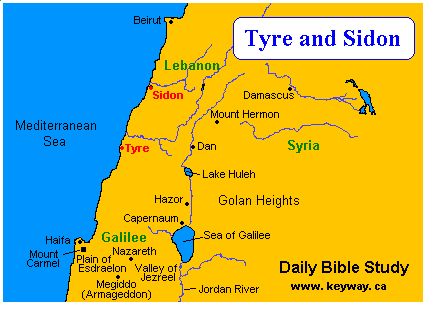
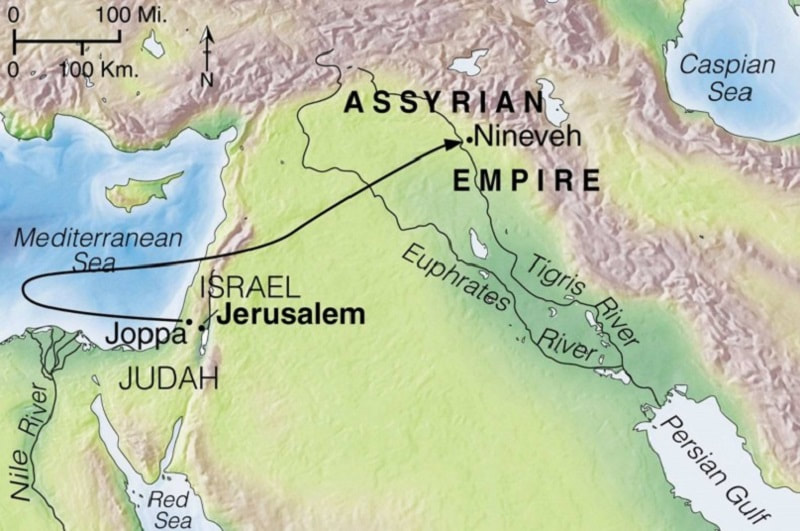
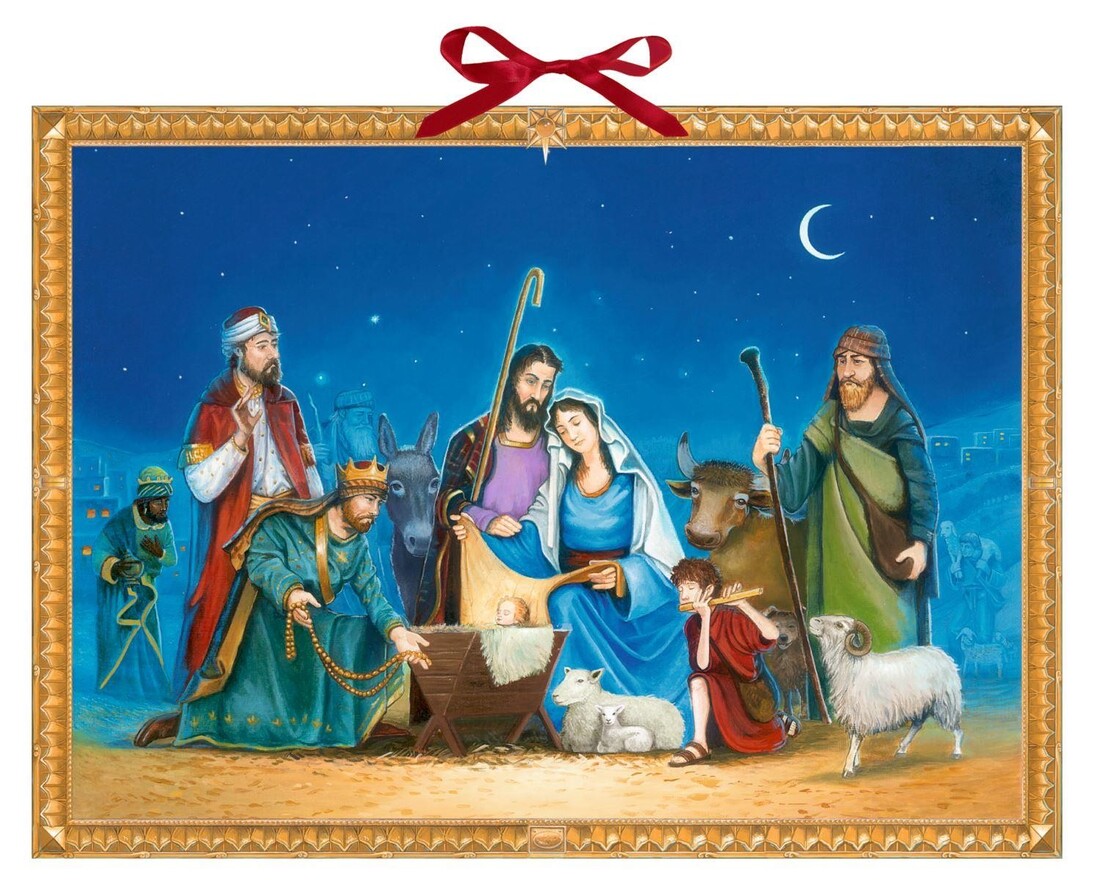
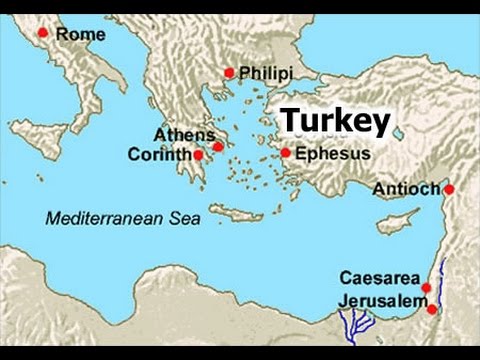
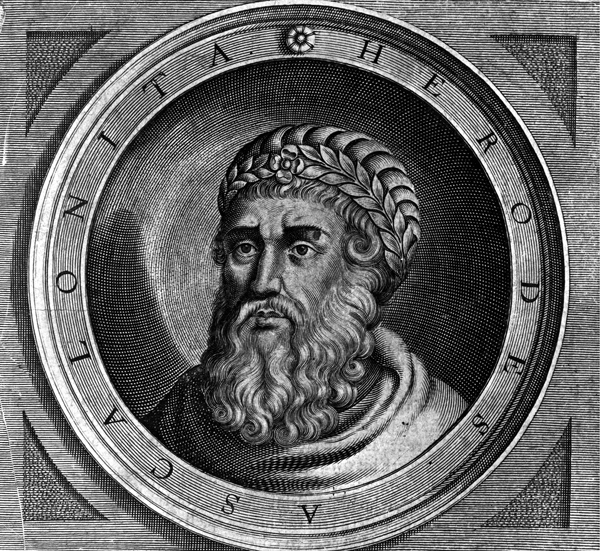
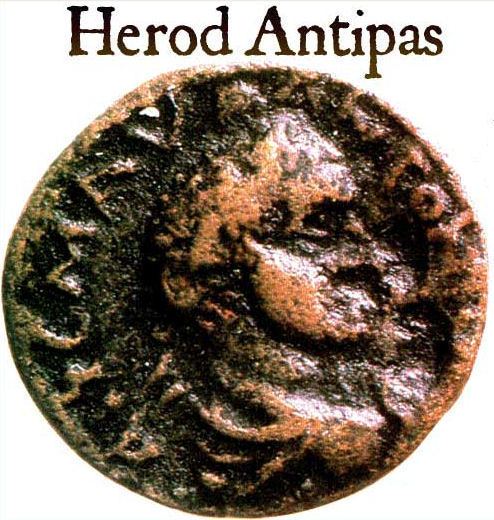
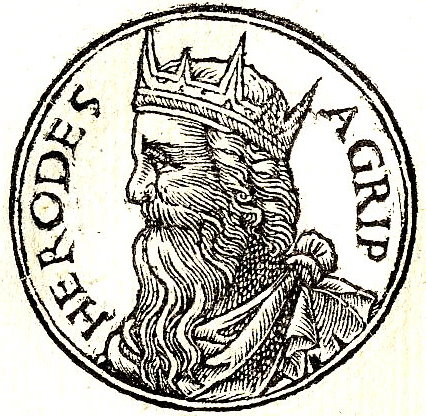
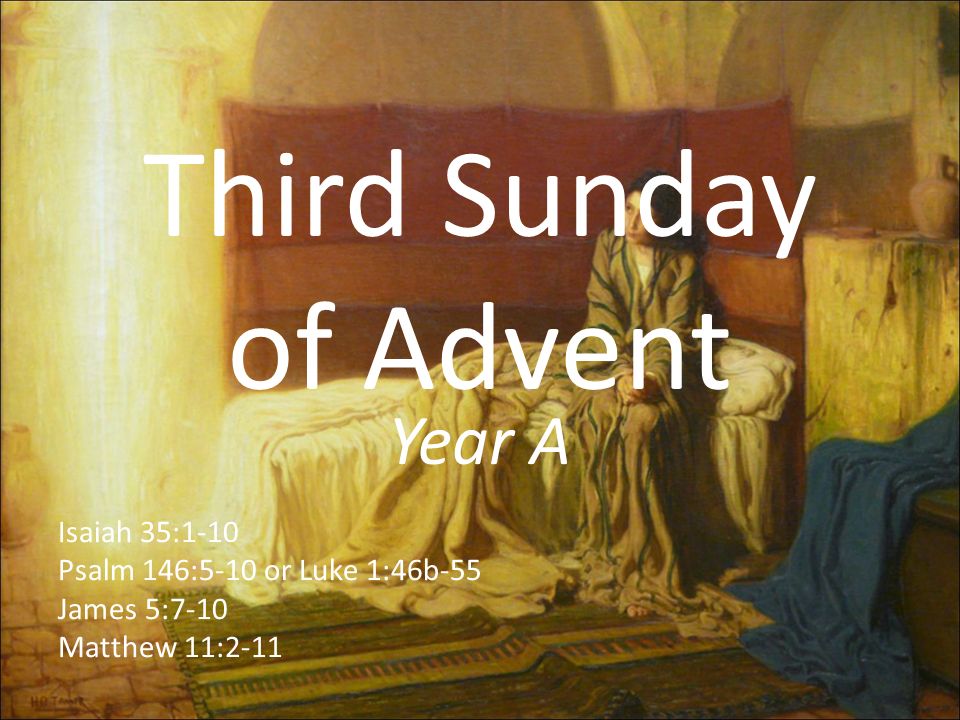
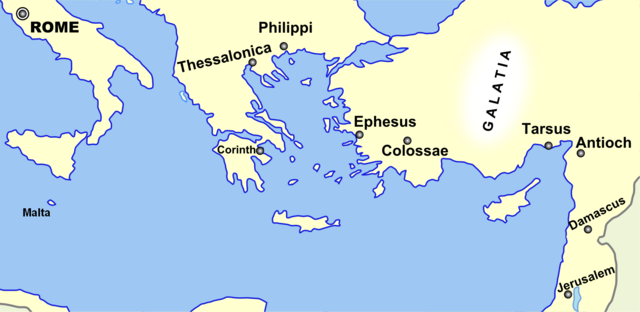
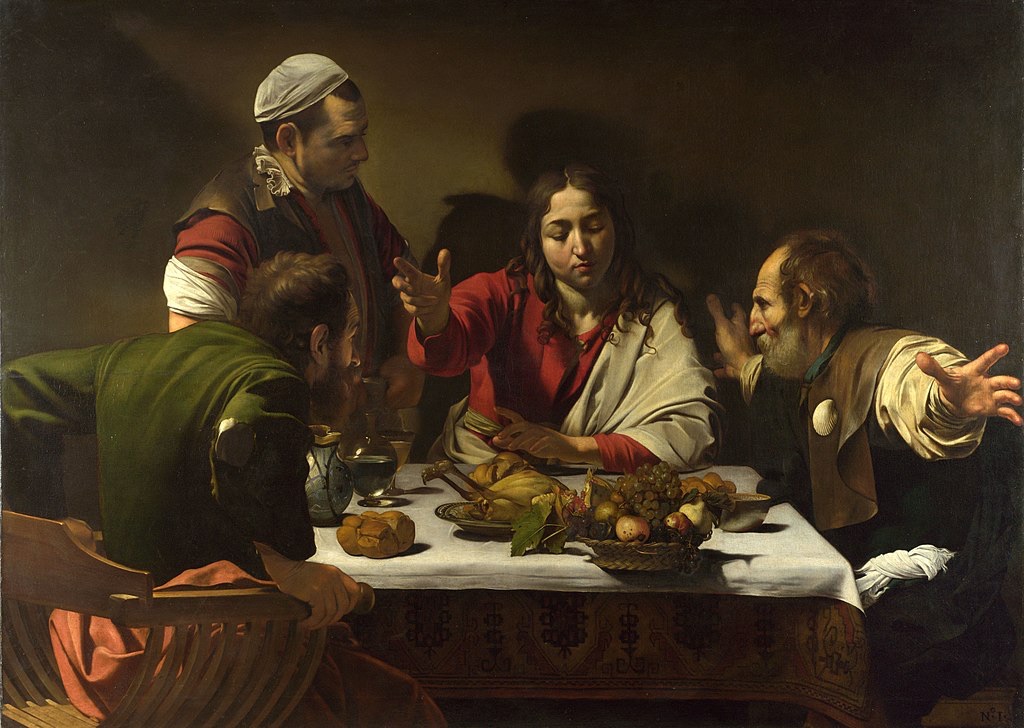
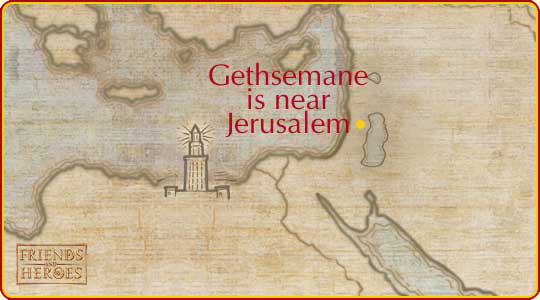
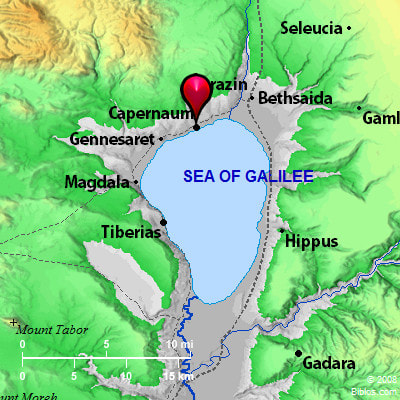
 RSS Feed
RSS Feed